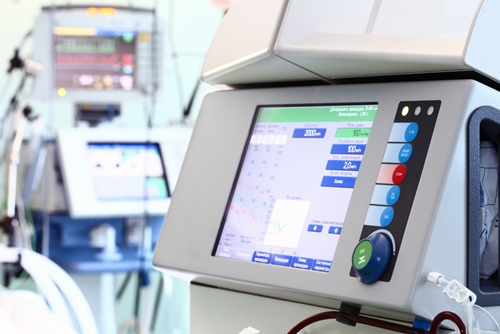

- Contributions by industrial experts with engineers in mind
- Focused on specialty-chemical material applications and selection
Knowledge Center
Water Based Adhesives in the Textile Industry

Water Based Textile Adhesives
The textile industry has the need to attach a varied selection of materials together that operate in a wide range of environments. While stitching has been the traditional way of binding materials together, adhesives are finding increasing use as a way to lower costs, offer bonding between dissimilar substrates and increase overall quality. Water-based adhesives, sometimes called dispersions, are one of the main classes of adhesives used in the textile industry because of their ease of use, economy and because they are environmentally friendly.
What are water based adhesives?
Water-based adhesives are dispersions of natural or synthetic polymers in water which cure as water evaporates from adhesive. Full-cure can take up to 24 hours, but heat is often used to speed curing time, either with heated rollers, or by "baking" adhered surfaces to speed evaporation. These adhesives exhibit excellent adhesion and long-term strength, particularly on foams and woven fabrics. Adhesion on low-surface energy materials is less ideal, so their use is usually confined to other materials. Though they are not waterproof, formulations are available that offer different degrees of water resistance and washing. Many washing/dry cleaning resistant formulations are not freeze-thaw stable, however, which can be a factor in commercial quantity and aftermarket distribution. They can be applied in a number of methods, including roller systems, which allow for quick and economical production on long runs, and slot or spray nozzle systems.
"Water-based adhesives offer excellent wetting and adhesion to a number of surfaces, including porous surfaces like foam."
Advantages of water based glues
Water-based glues have a number of advantages that have led to their widespread use in the textile industry. Their ease of use is extremely high - they can be stored and transported easily and, because they are water-soluble, cleaning equipment is simple. They have relatively long open times, and are easily dispensed via a number of methods allowing great flexibility in their application. They're quite economical, being one of the least expensive adhesives and easy to both obtain and store in bulk. Water-based adhesives offer excellent wetting and adhesion to a number of surfaces, including porous surfaces like foam. Unlike their solvent-based counterparts, there are no VOC or other health concerns with water-based adhesives. With a number of countries tightening VOC regulations, water-based adhesives can make a good alternative to solvent-based adhesives.
How are water based adhesives used?
Water-based adhesives are used in lamination of all types of fabric used in clothing, furniture and other textile applications (like automotive interiors). They excel at bonding dissimilar materials, like foam-fabric bonding, or bonding different types of fabric. There are three major types of adhesive are used in the textile industry - hot melts, solvent-based and water-based. Water-based adhesives have some specific advantages and applications they are suited for. Because they do not require heat to apply (like hot-melt adhesives) they can be used on more delicate fabrics like lace and those used in lingerie. Because they contain few or no solvents, they are often used as a replacement for solvent-based adhesives where VOCs would be a concern. Water-based adhesives can have a wide range of beneficial properties, depending on formulation, that make them suited for various applications. Water-based glues are available for applications requiring soft bond-lines or high temperature resistance, and can even meet CFR 25.853 flame-retardant regulations for aircraft interior applications. Formulations are available with various combinations of high- and low-tack and variable open times for differing applications.






